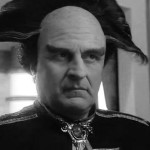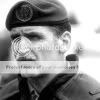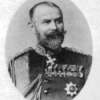- 27 Jun 2007 22:54
#1251016
I'll just kick-start this with 2:
1) Germany 88
2) American Jeep
The 88 was a feared and devastatingly effective anti-air and anti-tank gun on all fronts. That's prety much it. Easy to produce and move, reliable, and powerful, it stayed active and effective throughout the war.
The Jeep, while a non-combat vehicle, allowed for rapid mobilization of infantry, enabling better communication and troop and small supply movement. It was far more robust and capable than its German counterparts, and the Soviets loved them and importated as many as they could. Along with the deuce-and-a-half, this allowed the Allied forces to use the principals of mechanized warfare that Germany pioneered back against them, with more rapid and efficient infantry deployment.
Oh, I'll add a third, though more noted - the bazooka, which gave unsupported infantry the ability to take out armored vehicles, and the effectiveness of which was so great that today, over 60 years later, advanced versions such as the RPG and shoulder-launched SAM and TOW are vital parts of any infantry unit, as well as giving light vehicles anti-armor capabilities.
1) Germany 88
2) American Jeep
The 88 was a feared and devastatingly effective anti-air and anti-tank gun on all fronts. That's prety much it. Easy to produce and move, reliable, and powerful, it stayed active and effective throughout the war.
The Jeep, while a non-combat vehicle, allowed for rapid mobilization of infantry, enabling better communication and troop and small supply movement. It was far more robust and capable than its German counterparts, and the Soviets loved them and importated as many as they could. Along with the deuce-and-a-half, this allowed the Allied forces to use the principals of mechanized warfare that Germany pioneered back against them, with more rapid and efficient infantry deployment.
Oh, I'll add a third, though more noted - the bazooka, which gave unsupported infantry the ability to take out armored vehicles, and the effectiveness of which was so great that today, over 60 years later, advanced versions such as the RPG and shoulder-launched SAM and TOW are vital parts of any infantry unit, as well as giving light vehicles anti-armor capabilities.
[ Forum Rules ][ Newbie Guide ][ Mission Statement ][ FAQ ]
 "Our literature is equated with dynamite. This is a great honour for us, I think"
"Our literature is equated with dynamite. This is a great honour for us, I think"
Bernie 2020
 "Our literature is equated with dynamite. This is a great honour for us, I think"
"Our literature is equated with dynamite. This is a great honour for us, I think"Bernie 2020


























 - By wat0n
- By wat0n